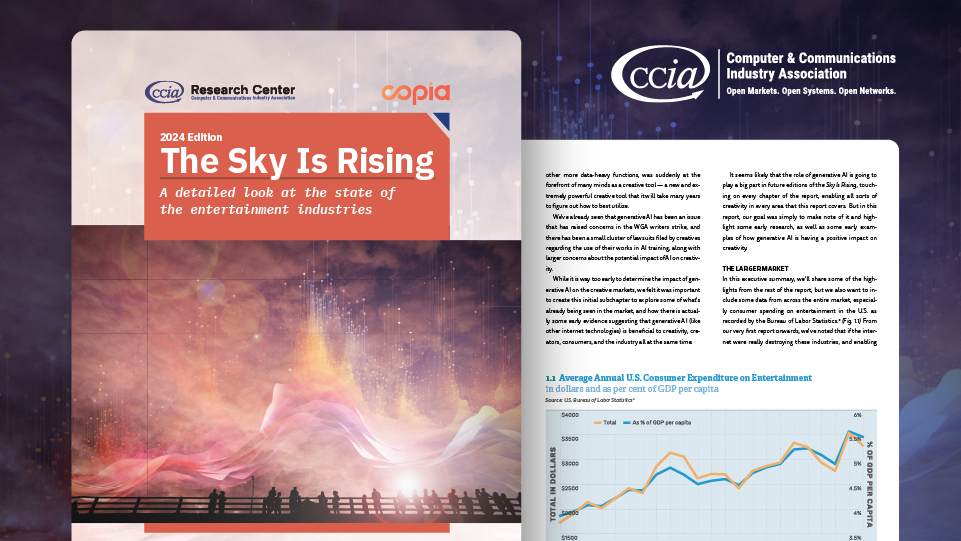Trendspotting via comScore: How the Internet is Changing
Recently, comScore — one of the leading Internet analytics companies — published its annual report on prevailing Internet trends: “2013 U.S. Digital Future in Focus.” It is an informative read that I would recommend not only for business leaders and entrepreneurs trying to evolve their business models (or create new ones), but also for policy makers trying to come to grasps with how to deal with the fast-changing digital world.
Below is a synopsis of the important findings, including solid numbers that help quantify a number of trends previously noted here at DisCo. These trends include:
- The growth of online video and associated business models
- In 2012, there were more than 450 billion desktop computer video views, which represents a 7% increase over the previous year.
- The U.S. online video market attracts, on average, 75 million viewers per day.
- Key to the cord-cutting phenomenon we have highlighted, the monetization of online video is increasing with number of online videos accompanied by video advertisements increasing from 14% to 23% over the last year.
- Changing consumer search behavior (or the “fast-evolving market for answers”)
- Even though the number of people using search engines increased by 4%, the number of “core searches” (general purpose search engine queries) declined 3% from 2011 – 2012. Consumers are moving toward vertical search sites, mobile search and apps to get more of their answers, particularly in certain verticals such as local restaurant searches or consumer product information. In fact, comScore found that even though core searches declined, vertical searches were up 8% year-over-year.
- The increasing importance of the mobile Internet
- For the first time, smartphones outnumber “feature phones” (non-smartphone mobile phones).
- According to comScore, we are in the “late majority” part of the technology of adoption cycle for smart devices, where attributes such as price and features matter more than brand. This helps explain the rise of Android (53.4% of U.S. mobile market share) vis-a-vis Apple’s iOS (36.3% of U.S. mobile market share).
- 1 in 4 smartphone owners also own a tablet as more and more people become “multi-platform” information and content consumers.
- Certain activities, such as digital media consumption are partially migrating from the PC to smartphones and tablets (as I have written about before). Now, mobile digital media consumptions accounts for ⅓ of overall digital media consumption.
- As we have also discussed, Internet companies need to adapt their business models to better mesh with mobile Internet usage. As comScore notes, the “failure to meet consumer expectations and aggressively prove the value of these additional [mobile] channels in 2013 could spell a very rocky economic transition by the time 2014 rolls around.”
Besides quantifying current trends, comScore analysts used the data they gathered to extrapolate important trends for the upcoming year. Several of these trends and tips stand out from a DisCo perspective.
- Companies need to stay ahead of their customers’ usage curve and, as the report states, “deliver them content they want, when and where they want it” (as opposed to, say, scratching and clawing to prevent consumers from having more convenient viewing options.)
- Facebook’s recent launch of its social search feature Graph Search puts Facebook and Google on a collision course as the once-distinct social media and search engine markets converge. Furthermore, much of the early value of “social search” strategies resides in local search, where users look for restaurant, nightlife or event recommendations from their social media friends in particular localities. This seems to put companies like Yelp and Tripadvisor right in the middle of this fight for eyeballs as well.
- The observed acceleration of e-commerce and mobile-commerce (“m-commerce”) is only likely to continue now that the majority of Americans have smartphones. As a result, traditional brick-and-mortar retailers need to adapt and incorporate these other commercial channels or face potential disruption and the resultant loss of market share.
- Businesses today, particularly online businesses, are “exponentially increasing” the amount of data they collect. However, the flood of data greatly exceeds the current ability of businesses to meaningfully process it, which, according to comScore, “leaves a considerable amount of value on the table.” Future winners in the digital marketplace will be companies that can provide the tools and resources to process this raw material and turn it into useful information.








